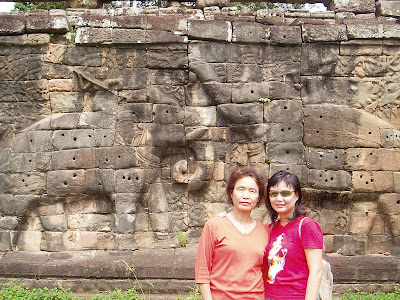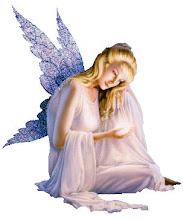


We adjourned for lunch at a restaurant in Nilai, famed for its Buddha Jump Over the Wall, but of course, we didn’t order that expensive dish.

Monkeying around in front of the restaurant




Monkeying around in front of the restaurant







There was nothing much to do at the airport so we just killed time by reading and napping. Luckily the flight arrived ahead of schedule and we departed about 20 minutes ahead. We arrived back on Malaysia soil at about 3.30pm.







 We walked a bit around the area after dinner before heading back to the hotel on a tuk tuk.
We walked a bit around the area after dinner before heading back to the hotel on a tuk tuk.



Natural dyes

 The meticulous ikat technique and the beautiful results
The meticulous ikat technique and the beautiful results

On the way back from the silk factory, we stopped by the War Museum. Laid out on the compound is a motley assortment of tanks, armored vehicles, anti-aircraft guns, and artillery cannons flanked by a few sheds housing a collection of automatic weapons, artillery shells, mines, grenades, grenade and rocket launchers, uniforms and Khmer Rouge flags. The admission feed is USD3 which is a little steep but it comes with a free guided tour. Our guide was a soldier in the war and had lost a leg. He also had quite a few bullet holes in him, and some shrapnel was visible under his skin. An orphan by the age of 10, his parents and elder sister were killed during the Pol Pot regime. He joined the army for shelter, cloth and food. He told us some first hand stories as we went from exhibit to exhibit which was quite educational and enlightening. He was still very emotional when relating his stories to us, in particular when he told us how his wife was killed by landmines several years ago. We gave him a relatively huge tip, a little something which we hope will make his day a little better.

As it was almost noon, we decided to head to the Old Market area for lunch. We went to Khmer Kitchen Restaurant, which serves traditional Khmer fares. As with all our food encounters in Siem Reap, the food there was pretty decent. We then walked around the market before heading to the Cambodian Cultural Village.
(to be continued…)
 One of the most popular of Angkor's many wonders, Ta Prohm was recently used as the set for the shooting of Tomb Raider. This 12th century Mahayana Buddhist temple is one of the Angkorian era's largest edifices and has been left much as it looked when first discovered more than a century ago. The jungle is devouring its structures, with tentacle-like roots of mature trees slowly strangling the stonework, resulting in crumbling structures.
One of the most popular of Angkor's many wonders, Ta Prohm was recently used as the set for the shooting of Tomb Raider. This 12th century Mahayana Buddhist temple is one of the Angkorian era's largest edifices and has been left much as it looked when first discovered more than a century ago. The jungle is devouring its structures, with tentacle-like roots of mature trees slowly strangling the stonework, resulting in crumbling structures.
By then, we had been walking for almost 7 hours and it was only slightly after 12 noon. We settled for lunch at some stalls opposite Angkor Wat. After some much needed rest and replenish our energy, we decided to enter Angkor Wat again with the guide, just so that he can regale us with stories of Angkor Wat. As it was still early when we completed the tour of Angkor Wat, the guide brought us to another temple in the jungle, Preah Khan. Halfway through our walk in the temple, it started to pour and we quickly took shelter under whatever little is left standing of the temple. Our driver, John, who was waiting in the van, brought us some umbrellas so we could make our way back to the van. We were all wet with our feet covered with mud, coupled with temple fatigue setting in, we decided to head back to the hotel.
Back at the hotel, we showered and were planning to take a short nap before hitting the Central Market. As we were all spent forces, we ended up sleeping for more than two hours, waking up at about 7pm. We headed for dinner at Dead Fish Tower, a restaurant specializing in Thai and Western food. Sis, mum and hubby ordered Thai food, which was quite good while I had club sandwich.

After dinner, we went across to the Central Market to do some shopping. I bought some books, pirated ones, :-) as they were cheap and of pretty decent quality and bags for myself, babysitter and her daughter.


The good and the bad
At the Bayon temple, 216 gargantuan faces of Buddha watch over visitors. Built around 1200 by Jayavarman VII in the exact centre of the city, it is one of Angkor's most stunning temples with a staggering 11000 figures carved into the stone walls.




 Terrace of the Leper King, just north of Terrace of Elephants, is a carved 6m high platform, on top of which stands a mysterious statue. Some thinks it's Yasovarman, a Khmer ruler who died of leprosy, while others think it's the Hindu god of Death, Yama.
Terrace of the Leper King, just north of Terrace of Elephants, is a carved 6m high platform, on top of which stands a mysterious statue. Some thinks it's Yasovarman, a Khmer ruler who died of leprosy, while others think it's the Hindu god of Death, Yama.
Most photos of Angkor Wat reveals three towers, but there's actually five. The two towers on each side are parallel so it appears as if there's only a central tower surrounded by two lesser towers.
 Spectacular as it is, it didn't send a tingle down my spine, didn't inspire in me that WOW feeling. Returning to the van, we found our guide had already arrived. As we were already tired out from our own exploration, we declined his offer to take us into Angkor Wat again. The 5-minute ride to Angkor Thom was a welcome relief for our sore feet.
Spectacular as it is, it didn't send a tingle down my spine, didn't inspire in me that WOW feeling. Returning to the van, we found our guide had already arrived. As we were already tired out from our own exploration, we declined his offer to take us into Angkor Wat again. The 5-minute ride to Angkor Thom was a welcome relief for our sore feet.
(to be continued…)


 The road to Tonle Sap
The road to Tonle SapThe blue buildings are the village's school and on the right is the basketball court
We then visited Wat Thmey (New Wat), a simple pagoda which claim to fame is a unique glass-walled stupa containing the bones of victims of the Khmer Rouge. Some of the bones were recovered from a nearby well while others are the remains of soldiers who died on a nearby battlefield.

Next, we climbed Phnom Bakheng or Bakheng Mountain to watch sunset. Phnom Bakheng is within the Angkor Wat Archaeological Complex, a World Heritage Site by UNESCO, which encompasses dozens of temple ruins. Atop the mountain is the first of temples of Angkor. Built during the reign of Yasovarman (889 – 910), it is designed to represent the Hindu's mythical Mount Meru, home of the Hindu gods. Unfortunately, it was a cloudy day and we didn't manage to catch the supposedly spectacular evening glow.
 Top right: People gathered at Phnom Bakheng to watch the sunset (below right) which was less than spectacular due to the thick clouds
Top right: People gathered at Phnom Bakheng to watch the sunset (below right) which was less than spectacular due to the thick clouds
We then made our way back to the hotel to refresh ourselves before dinner. Dinner was at Kulen II Restaurant. The restaurant has the same concept as our Restoran Seri Melayu in Jalan Conlay. There's a buffet spread of Cambodian food with the local Apsara Dance being performed nightly from 8.00 – 9.00pm.

We took a slow stroll to the night market which was about 20 minutes walk away. It was a disappointment. The night market comprises only about 20 stalls and was very quiet. As we were all tired, we decided to call it night and headed back to the hotel.
